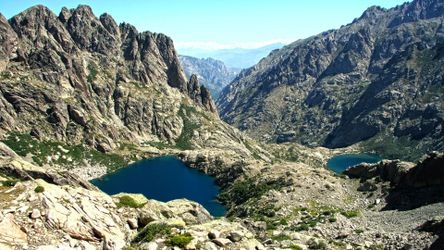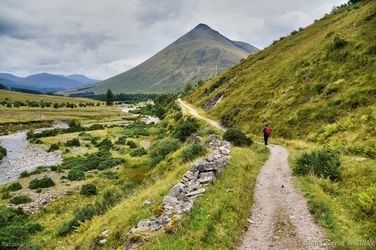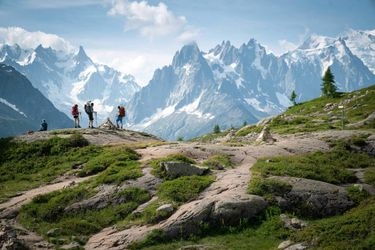Treking Kungsleden: Section 1
Also known as: Royal Trail / King's Trail
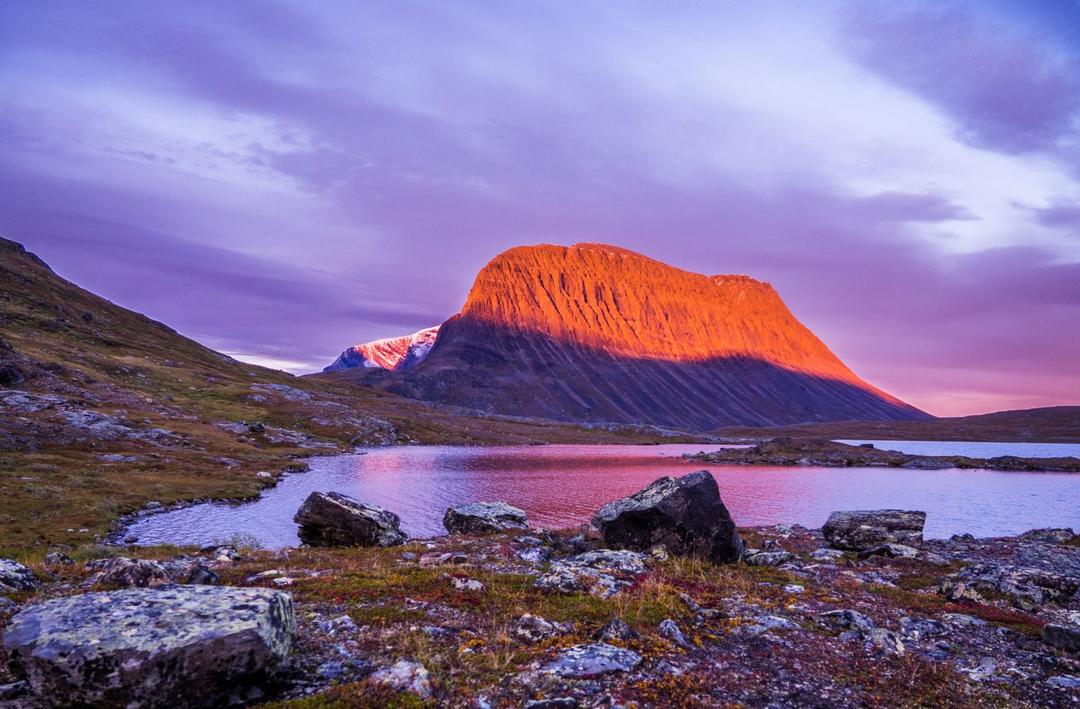
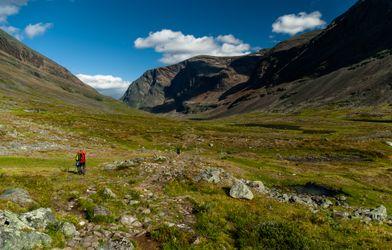
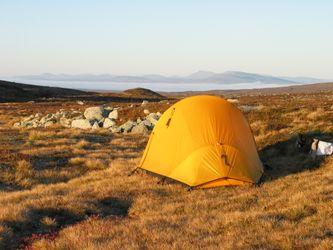
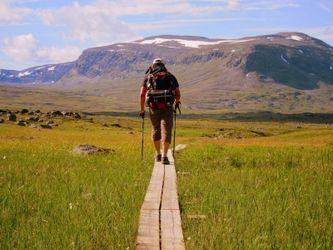

Table of contents
Distances
- 7days, 106 km, +250 m, 1,150 m high point
- daily: 4 - 7 hours, 12 - 21 km, +290 - 320 m gain
Route
- through hike
- starting in Abisko
- ending in Nikkaluokta
Cost
- $420 solo
When to go
- June to September
Permits
- 0 permits are needed
- costing around $0 total
Guide mandatory?
- no
Accommodation
Mountain Huts, Lodges, Wild CampingThese are pictures taken while trekking Kungsleden: Section 1. They're shown here to give you an idea of what the route is like. You're welcome to share your own pictures of hiking Kungsleden: Section 1, to help the community of hikers. Picture here are either uploaded by members (their own, or creative commons pictures), or guides.
Abisko to Abiskojaure (490 m)
Abiskojaure to Alesjaure (780 m)
Alesjaure to Tjäktja (1,100 m)
Tjäktja to Sälka (900 m)
Sälka to Singi (750 m)
Singi to Kebnekaise fjällstation (690 m)
Kebnekaise Fjällstation to Nikkaluokta (440 m)
The trek is 3 / 10, based on the below factors:
Treks that involve rugged or uneven terrain, such as rocky paths, scree slopes, or dense forests, may require more technical skills or physical effort.
Considering the maximum altitude reached during the trek. Higher altitudes can present challenges like thin air, low oxygen levels, and potential altitude sickness.
The total distance of the trek. Longer treks generally require more endurance and physical fitness.
Total elevation gain throughout the trek. Treks with significant altitude changes can be more challenging, especially if they involve steep ascents or descents.
Some treks may require basic technical skills like river crossings, using ropes, or scrambling over rocks.
Based on the availability of support facilities such as accommodation, food, water sources, and emergency services. Treks with limited infrastructure or remote areas can be more challenging due to self-sufficiency requirements. The less support facilities there are the harder the trek.
How tough are the prevailing weather and climate conditions during the trek. Harsh weather, extreme temperatures, or unpredictable conditions can add to the difficulty.
Kungsleden: Section 1 weather
How is the weather on Kungsleden: Section 1, and when is the best time to go.
The best time to trek Kungsleden: Section 1 is in these months:
- Jun
- Jul
- Aug
- Sep
Kungsleden: Section 1 Gear Packing List
What To Take to trek Kungsleden: Section 1
Gear
- Hiking Backpack
- Hiking Boots
- Trekking Poles
- Sleeping Bag
- Sleeping Pad
- Tent or Shelter
- Cooking Stove
- Cookware and Utensils
- Water Bottles or Hydration System
- Headlamp
- Navigation Tools (Map, Compass, GPS)
- Multi-tool or Knife
- First Aid Kit
- Sunscreen and Lip Balm
Clothing
- Moisture-Wicking Base Layers
- Insulating Mid Layers
- Waterproof and Windproof Outer Layers
- Hiking Socks
- Hat or Beanie
- Gloves
- Hiking Pants
- Convertible Pants or Shorts
- Gaiters
- Extra Underwear
Food and Hydration
- Trail Mix or Energy Bars
- Dehydrated Meals
- Instant Coffee or Tea
- Utensils for Eating
- Bear Canister or Bear Bag (for storing food)
- Water Filtration or Purification System
Personal Items
- Identification and Permits
- Cash or Payment Method
- Mobile Phone and Charger
- Camera or Binoculars (optional)
- Toiletries and Biodegradable Soap
- Towel or Packable Microfiber Cloth
- Personal Medications
Extras
- Trash Bags (pack out all waste)
- Insect Repellent
Kungsleden: Section 1 Services
Gear rental, porters, guides, transport, internet, accommodation
Accommodation
Accommodation options along the Kungsleden route include STF huts, mountain cabins, and tent camping. The STF huts provide shelter, bedding, and basic amenities for a comfortable stay.Food
Food is available at STF huts, mountain cabins, and some remote shops along the route. Expect meals with local ingredients, though options might be limited. It's advisable to carry some food supplies for portions of the trail with fewer facilities.Guides
Experienced guides are available for hire to provide insights into the trail's history, geography, and navigation. Guide costs vary based on the length and complexity of your trek.Porters
Porter services are not commonly available on the Kungsleden route. Trekkers generally carry their own gear or use equipment rental services.Medical facilities
While there are no dedicated medical facilities on the trail, larger STF huts might have basic first aid supplies.Gear rental
Equipment rental services are available at some points along the route. Commonly rented gear includes sleeping bags, backpacks, and tents.Transport
Transport options include flights to Kiruna Airport, trains to Abisko, and buses to trailheads. Additionally, you can use buses and trains to return from the trail's end at Vakkotavare.Internet / Phone
Cell phone coverage can be limited on the trail, especially in remote areas. Some STF huts might offer limited internet access or phone signal, but don't rely solely on this.ATMs
ATMs are generally not available along the trail. It's advisable to withdraw cash in Kiruna or other major towns before starting your trek.Shops
Limited shops are available along the route at STF huts and mountain cabins. They offer basic necessities like food, snacks, and some hiking gear. However, the selection might be limited, so carry essential supplies with you.Kungsleden: Section 1 Accomodation
What is the accommodation like treking Kungsleden: Section 1
Accommodation along the Kungsleden trail varies to suit different preferences and budgets. You'll find options ranging from basic mountain huts to more comfortable lodges, each offering a unique experience. Prices usually include meals, and availability might vary, so it's a good idea to plan ahead.
STF FJÄLLSTATION These are full service mountain lodges complete with electricity, running water, showers, restaurant, shop, wifi, and more. Only located near entry points of the trail, along the Kungsleden, they can be found at: Abisko, Kebnekaise, Saltoluokta, Kvikkjokk.
STF MOUNTAIN HUT The mountain huts are simple cabins located throughout the Swedish mountains. During the hiking season, each hut is staffed with a warden, and most of the huts have amenities such as a sauna and small shop for supplies. No electricity or running water is available.
Kungsleden: Section 1 permits
What permits are needed for treking Kungsleden: Section 1
Kungsleden: Section 1 access - getting there
How to get to Kungsleden: Section 1
- Public Transportation: Trains, buses, and ferries are available to reach the starting point, such as Abisko, and return from the endpoint, like Nikkaluokta or Kvikkjokk.
- Private Vehicle: If you have access to a car, you can drive to the starting point and leave your vehicle there, arranging transportation back from the endpoint. Some trailheads have parking facilities.
- Trekking Organizations: Some trekking organizations or outfitters offer shuttle services that can transport you to the starting point and pick you up from the endpoint of the trail.
- Taxi Services: Local taxi services might offer transportation to trailheads and endpoints. Check availability, rates, and make arrangements in advance.
These are variations on the typical route. Which could be added on; either part way along or at the start / end to extend the trek.
Nallo Mountain Hut
add 1 - 2 extra day
Kungsleden: Section 1 questions
What to know about trekking Kungsleden: Section 1
Common questions people have about this trek, if yours isn’t here - add it to get an answer.
Kungsleden: Section 1 Links
useful websites, Groups and communities
Groups / links with more info on the Kungsleden: Section 1 route.
Use facebook groups to find up to date info, plan trips and find trekking buddies.
These treks are similar in length, difficulty, and elevation. Offering a similar level of challenge as the Kungsleden: Section 1 trek.

